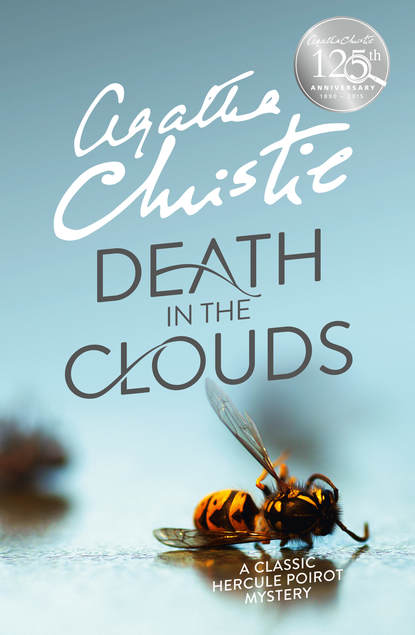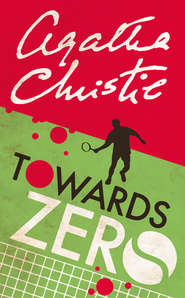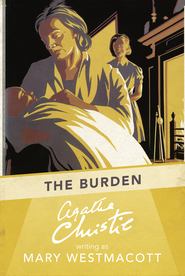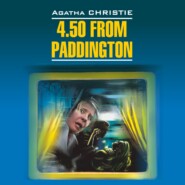По всем вопросам обращайтесь на: info@litportal.ru
(©) 2003-2024.
✖
Death in the Clouds
Автор
Год написания книги
2019
Настройки чтения
Размер шрифта
Высота строк
Поля
‘Did anything at all happen on the journey that you think might throw light on this affair?’
‘No, sir.’
‘Very good. You may stand down.’
‘Dr Roger Bryant.’
Dr Bryant gave his name and address and described himself as a specialist in ear and throat diseases.
‘Will you tell us in your own words, Dr Bryant, exactly what happened on Tuesday last, the eighteenth?’
‘Just before getting into Croydon I was approached by the chief steward. He asked me if I was a doctor. On my replying in the affirmative, he told me that one of the passengers had been taken ill. I rose and went with him. The woman in question was lying slumped down in her seat. She had been dead some time.’
‘What length of time in your opinion, Dr Bryant?’
‘I should say at least half an hour. Between half an hour and an hour would be my estimate.’
‘Did you form any theory as to the cause of death?’
‘No. It would have been impossible to say without a detailed examination.’
‘But you noticed a small puncture on the side of the neck?’
‘Yes.’
‘Thank you… Dr James Whistler.’
Dr Whistler was a thin, scraggy little man.
‘You are the police surgeon for this district?’
‘I am.’
‘Will you give your evidence in your own words?’
‘Shortly after three o’clock on Tuesday last, the eighteenth, I received a summons to Croydon aerodrome. There I was shown the body of a middle-aged woman in one of the seats of the air liner Prometheus. She was dead, and death had occurred, I should say, about an hour previously. I noticed a circular puncture on the side of the neck—directly on the jugular vein. This mark was quite consistent with having been caused by the sting of a wasp or by the insertion of a thorn which was shown to me. The body was removed to the mortuary, where I was able to make a detailed examination.’
‘What conclusions did you come to?’
‘I came to the conclusion that death was caused by the introduction of a powerful toxin into the blood stream. Death was due to acute paralysis of the heart, and must have been practically instantaneous.’
‘Can you tell us what that toxin was?’
‘It was a toxin I had never come across before.’
The reporters, listening attentively, wrote down ‘Unknown poison.’
‘Thank you… Mr Henry Winterspoon.’
Mr Winterspoon was a large, dreamy-looking man with a benignant expression. He looked kindly but stupid. It came as something of a shock to learn that he was chief Government analyst and an authority on rare poisons.
The coroner held up the fatal thorn and asked Mr Winterspoon if he recognized it.
‘I do. It was sent to me for analysis.’
‘Will you tell us the result of that analysis?’
‘Certainly. I should say that originally the dart had been dipped in a preparation of native curare—an arrow poison used by certain tribes.’
The reporters wrote with gusto.
‘You consider, then, that death may have been due to curare.’
‘Oh, no,’ said Mr Winterspoon. ‘There was only the faintest trace of the original preparation. According to my analysis, the dart had recently been dipped in the venom of Dispholidus typus, better known as the boomslang or tree snake.’
‘A boomslang? What is a boomslang?’
‘It is a South African snake—one of the most deadly and poisonous in existence. Its effect on a human being is not known, but some idea of the intense virulence of the venom can be realized when I tell you that on injecting the venom into a hyena, the hyena died before the needle could be withdrawn. A jackal died as though shot by a gun. The poison causes acute haemorrhage under the skin and also acts on the heart, paralysing its action.’
The reporters wrote: ‘Extraordinary Story. Snake Poison in Air Drama. Deadlier than the Cobra.’
‘Have you ever known the venom to be used in a case of deliberate poisoning?’
‘Never. It is most interesting.’
Thank you, Mr Winterspoon.’
Detective-Sergeant Wilson deposed to the finding of the blowpipe behind the cushion of one of the seats. There were no fingerprints on it. Experiments had been made with the dart and the blowpipe. What you might call the range of it was fairly accurate up to about ten yards.
‘M. Hercule Poirot.’
There was a little stir of interest, but M. Poirot’s evidence was very restrained. He had noticed nothing out of the way. Yes, it was he who had found the tiny dart on the floor of the car. It was in such a position as it would naturally have occupied if it had fallen from the neck of the dead woman.
‘The Countess of Horbury.’
The reporters wrote: ‘Peer’s wife gives evidence in Air Death Mystery.’ Some of them put ‘…in Snake Poison Mystery.’
Those who wrote for women’s papers put, ‘Lady Horbury wore one of the new collegian hats and fox furs,’ or ‘Lady Horbury, who is one of the smartest women in town, wore black with one of the new collegian hats,’ or ‘Lady Horbury, who before her marriage was Miss Cicely Bland, was smartly dressed in black with one of the new hats…’
Everyone enjoyed looking at the smart and lovely young woman, though her evidence was of the briefest. She had noticed nothing; she had never seen the deceased before.
Venetia Kerr succeeded her, but was definitely less of a thrill.
The indefatigable purveyors of news for women wrote, ‘Lord Cottesmore’s daughter wore a well-cut coat and skirt with one of the new stocks,’ and noted down the phrase, ‘Society Women at Inquest.’
‘James Ryder.’
‘You are James Bell Ryder, and your address is 17 Blainberry Avenue, NW?’

















